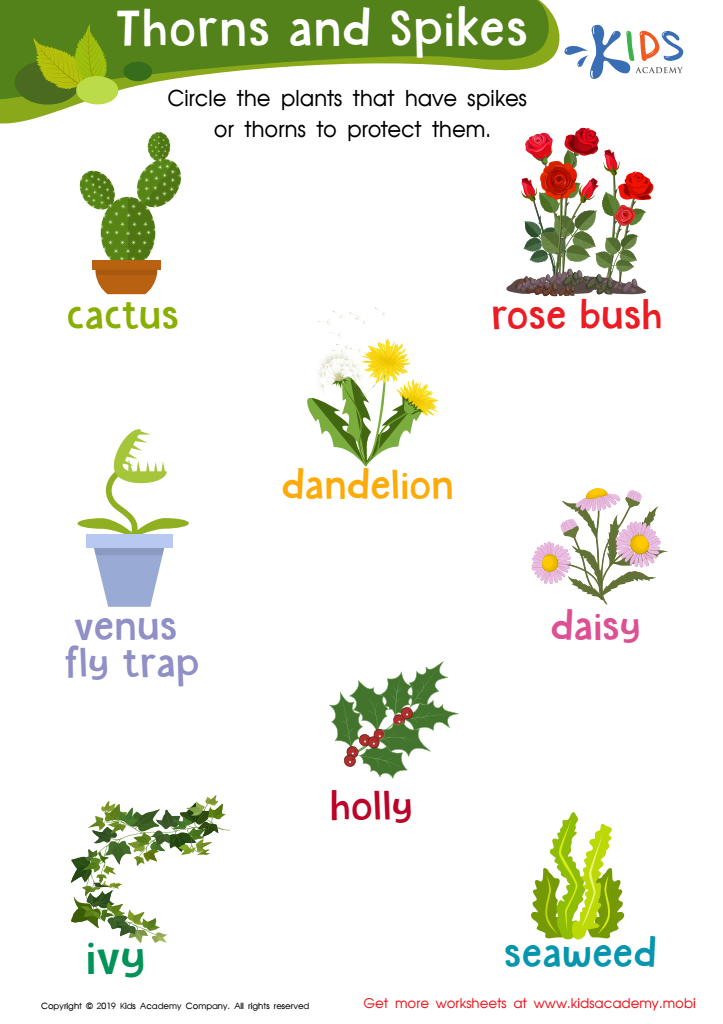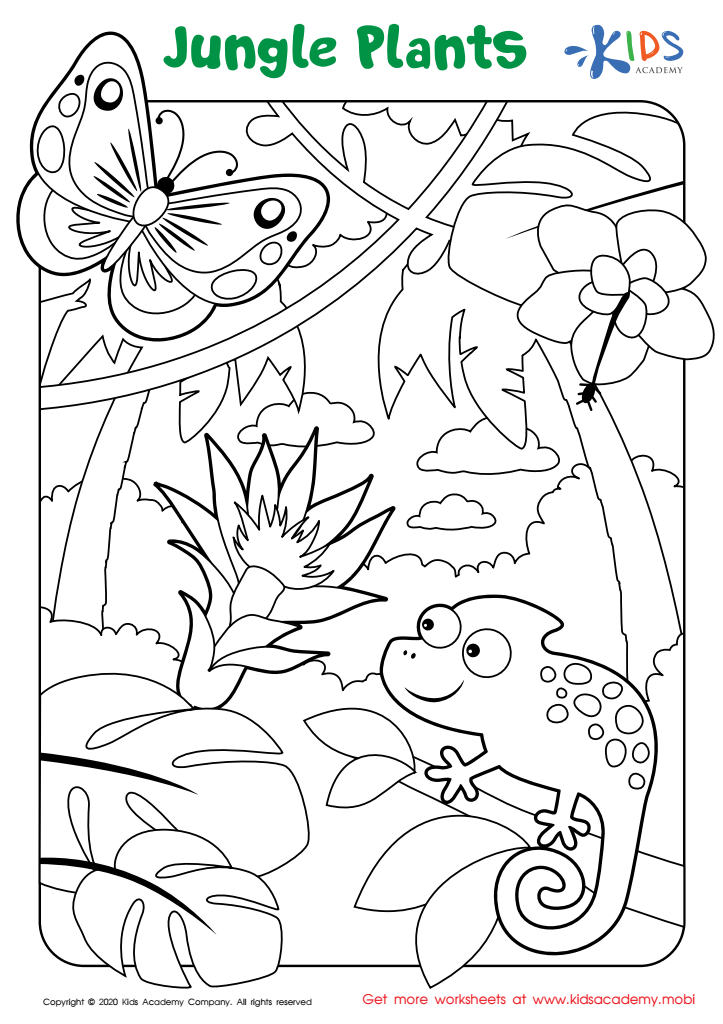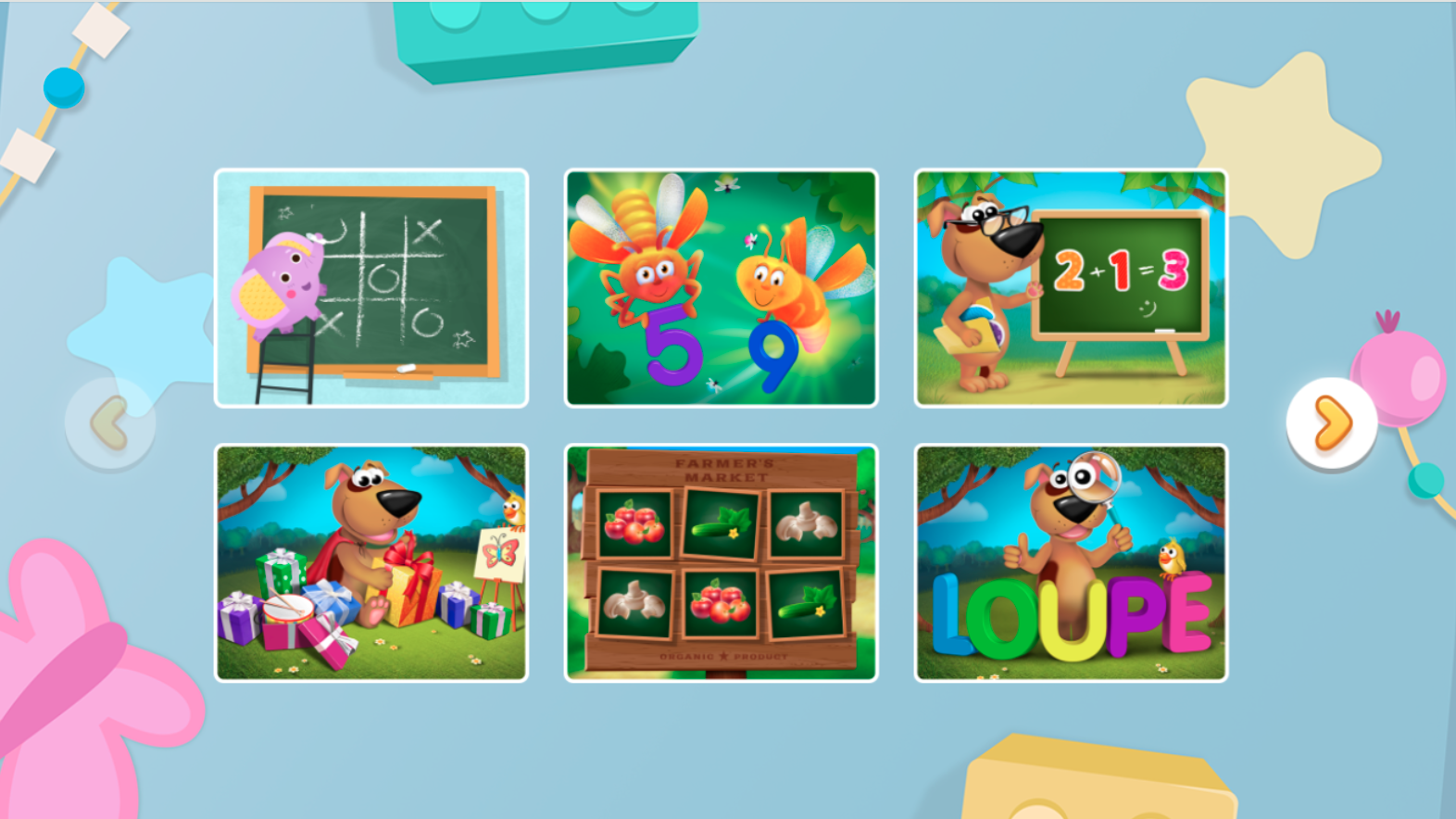Plant identification Worksheets for Ages 3-5
3 filtered results
-
From - To
Explore our engaging Plant Identification Worksheets, designed specifically for children aged 3-5! These fun and interactive activities help young learners discover the fascinating world of plants. Through colorful illustrations and simple prompts, kids will enhance their observation skills, vocabulary, and appreciation for nature. Our worksheets encourage creativity and critical thinking while introducing essential concepts like plant parts, colors, and shapes. Perfect for preschool environments or at-home learning, these resources support early childhood development and promote outdoor exploration. Spark curiosity and nurture a love for nature in your little ones with our delightful plant identification worksheets today!


Plant Fun Worksheet


Thorns and Spikes Worksheet


Jungle Plants Worksheet
Plant identification is a vital skill for children aged 3-5, offering numerous benefits that parents and teachers should prioritize. First, recognizing different plants fosters a connection with nature, enhancing children's appreciation for their environment. This connection is essential for emotional and cognitive development, as it encourages curiosity and exploration.
Moreover, plant identification introduces basic scientific concepts early on. Children learn about diversity, life cycles, and habitats, laying a foundation for future learning in biology and ecology. Engaging with plants also supports language development, as young learners expand their vocabulary by naming and describing various plants, improving their communication skills.
Additionally, spending time in nature decreases stress and boosts mental health, helping young children cultivate emotional resilience. Engaging in outdoor activities, including plant identification, promotes physical health through exercise, improving coordination and gross motor skills.
Lastly, fostering an appreciation for the environment promotes sustainable behaviors. Teaching young children to identify plants encourages stewardship of their ecosystems, instilling values of responsibility and conservation. By recognizing the importance of plant identification, parents and teachers can actively contribute to well-rounded development in children, enriching their educational experiences and lifelong connection to the world around them.

 Assign to My Students
Assign to My Students




















